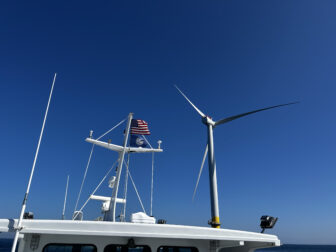cross posted from HERE
A couple weeks ago, I had an idea for how to alleviate poverty, crime, and bring green jobs to College Park/Prince Georges County. A figured it would be good to highlight an opportunity in this column to actually acquire the funding for some of my suggestions. Additionally, I actually had to do some investigating to figure out who was doing what. My sources are posted below my article.
Green jobs and government grants: Get what’s yours
Matt Dernoga
Issue date: 4/21/09
A couple weeks ago, I wrote a column suggesting a few measures by which Prince George’s County and local cities could invest in job-creating green initiatives. This would help alleviate poverty and reduce crime. Local governments everywhere have faced gigantic budget deficits and big spending cuts. Good ideas are nothing without a bag of cash, and I’ve got the treasure map for you.
The economic stimulus package appropriated $3.2 billion for the Energy Efficiency and Conservation Block Grant Program. This money is being allocated to states, counties, cities, Native American tribes and U.S. territories based on population size and energy usage for state and local governments. The rule for the money is it must assist in the implementation of strategies to reduce fossil fuel emissions and total energy use and improve energy efficiency. Prince George’s County is eligible for $6.6 million. College Park can grab $133,700.
The catch is the money isn’t just handed out to local governments. They have a certain amount earmarked and available to them, but they need to apply for grants detailing how they’ll use the money. Only then are they awarded the funds. In other words, someone in the government needs to know the money is there and go after it. If they don’t submit a formula grant proposal by June 25, good-bye free cash.
Fortunately, both Prince George’s County and College Park are aware of the opportunities the EECBG Program provides. The county has applied for seven grants and is considering three more. The assistant city manager is going to present a recommendation for a grant to the College Park City Council on May 5. I encourage students and residents to submit their ideas to their county and city representatives. It would be more productive than throwing a Tax Day tea party.
There’s going to be even more money available than the figures I listed above. The state has received $9.6 million from the EECBG Program. Up to 40 percent of that money could soon be made available to all counties and cities in the state to apply for with competitive grants. The other 60 percent is available to small towns with low populations, like Edmonston and Hyattsville, which didn’t get any money earmarked specifically for them. County and city governments should coordinate to get as much money as possible.
The county is working on a plan to build a solar farm at the county landfill with Pepco. This would create jobs and make the county a leader in renewable energy, but it needs money. Or consider energy-efficient overhauls of buildings, free residential and commercial energy audits, energy efficient traffic signals and street lighting and low-interest revolving door loan funds to low-income energy users for efficiency improvements.
The wish list goes on, and the money is sitting there alongside a more prosperous and sustainable future. Regardless of how you feel about the federal government’s spending, here is a case where money is available to benefit ordinary people on Main Street, not Wall Street. Go after it! X marks the spot.
Matt Dernoga is a junior government and politics major whose father serves on the Prince George’s County Council. He can be reached at mdernoga@umd.edu
———————————————————————————————–
http://www.eecbg.energy.gov/
http://www.eecbg.energy.gov/grantalloc.html






